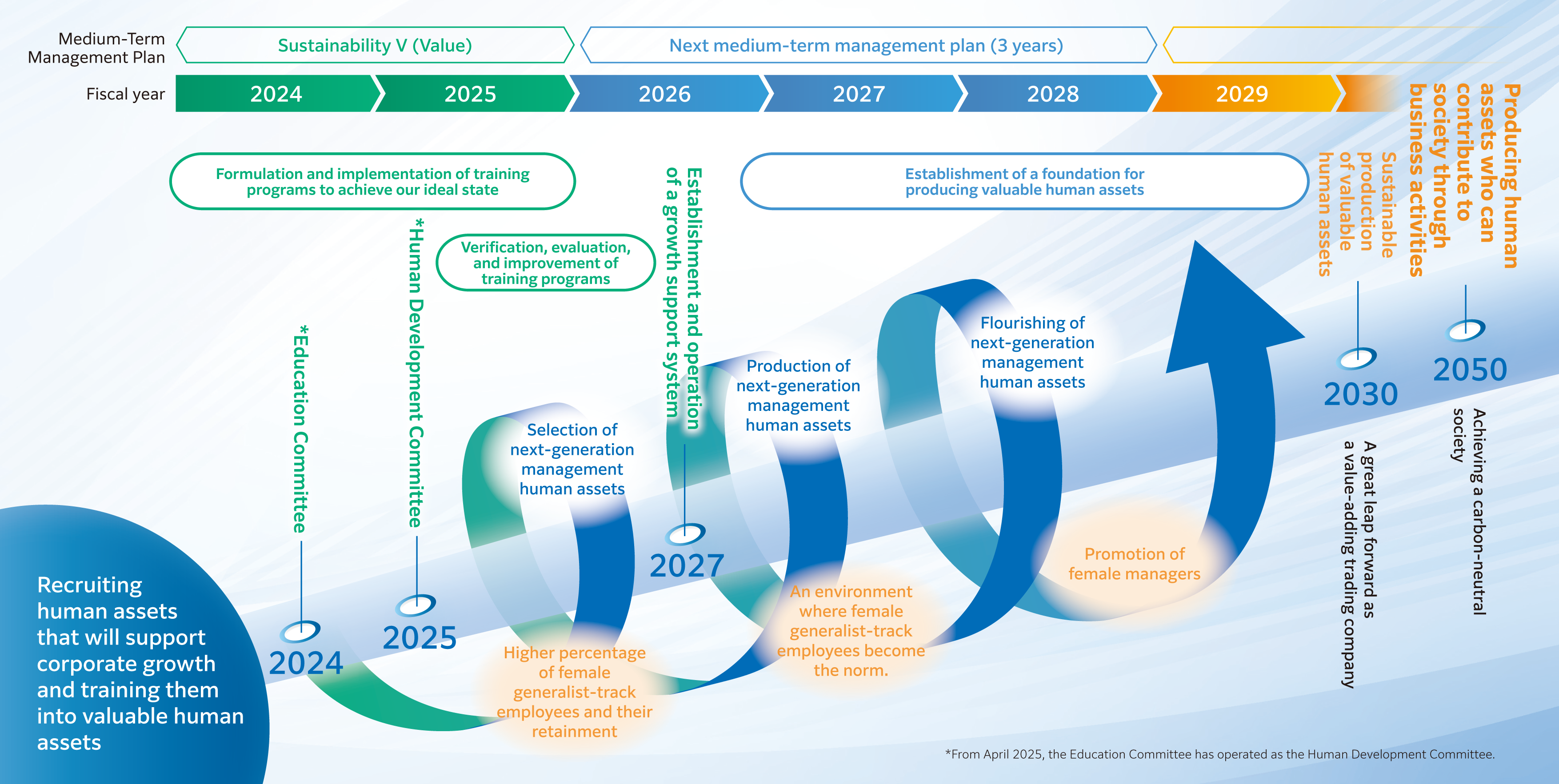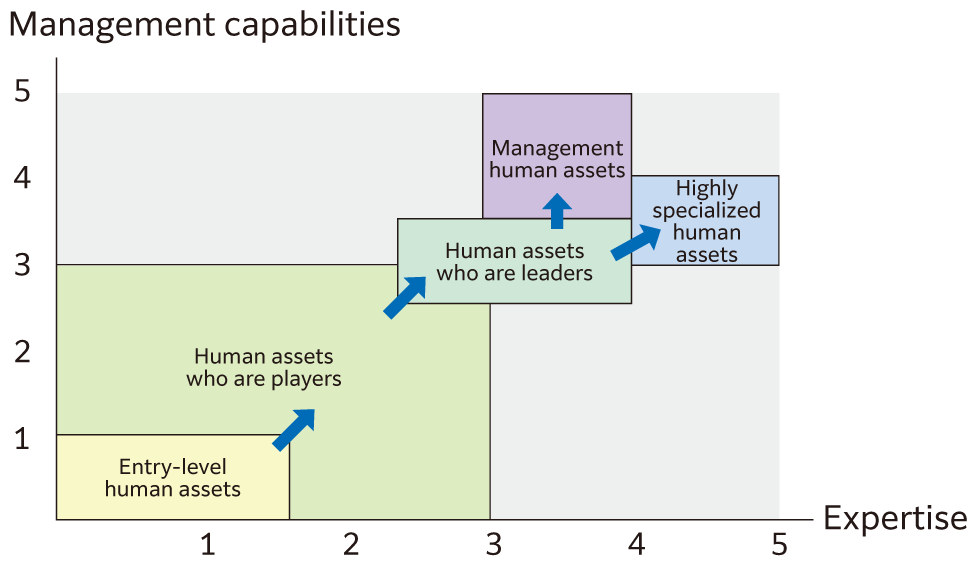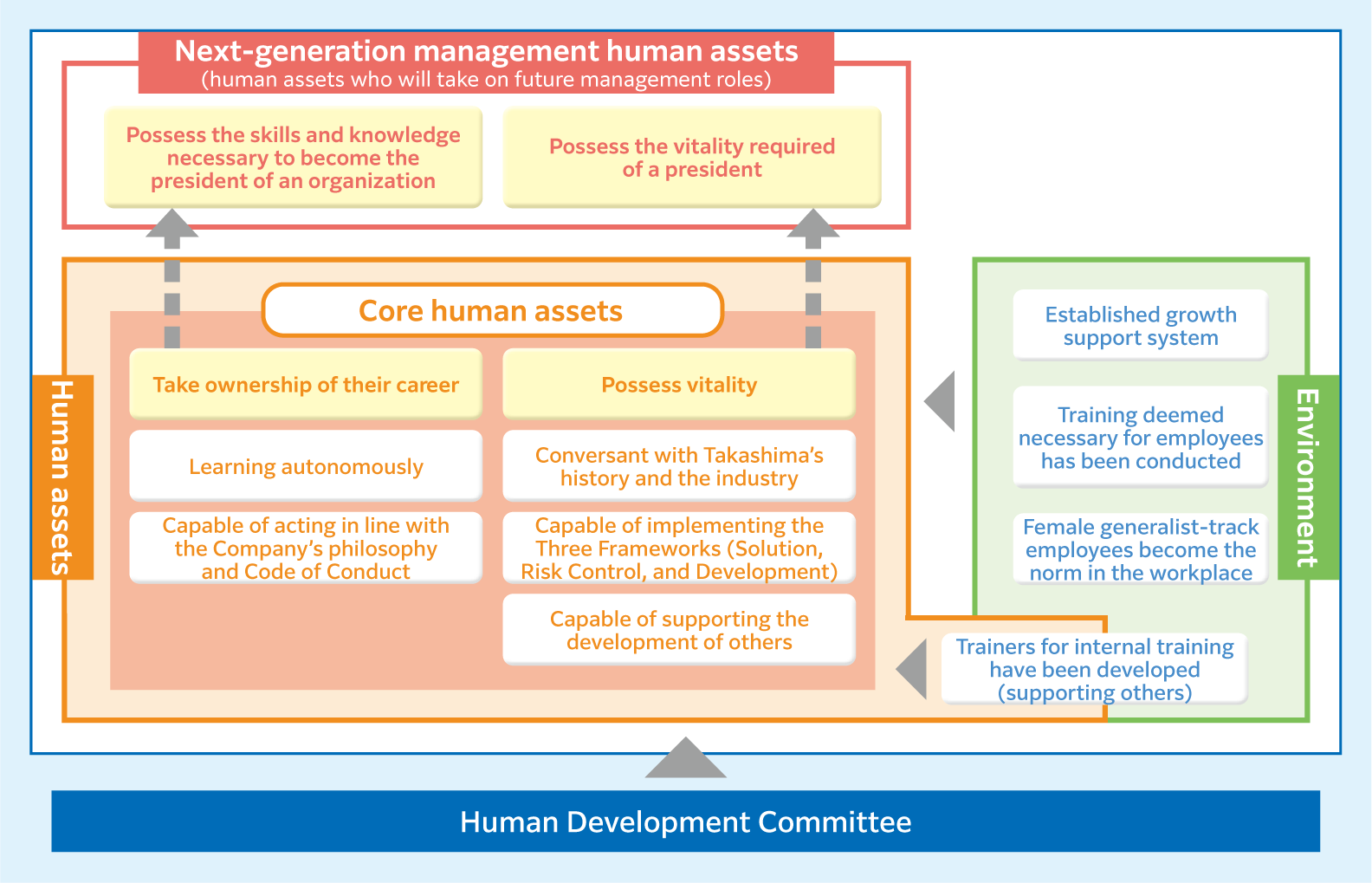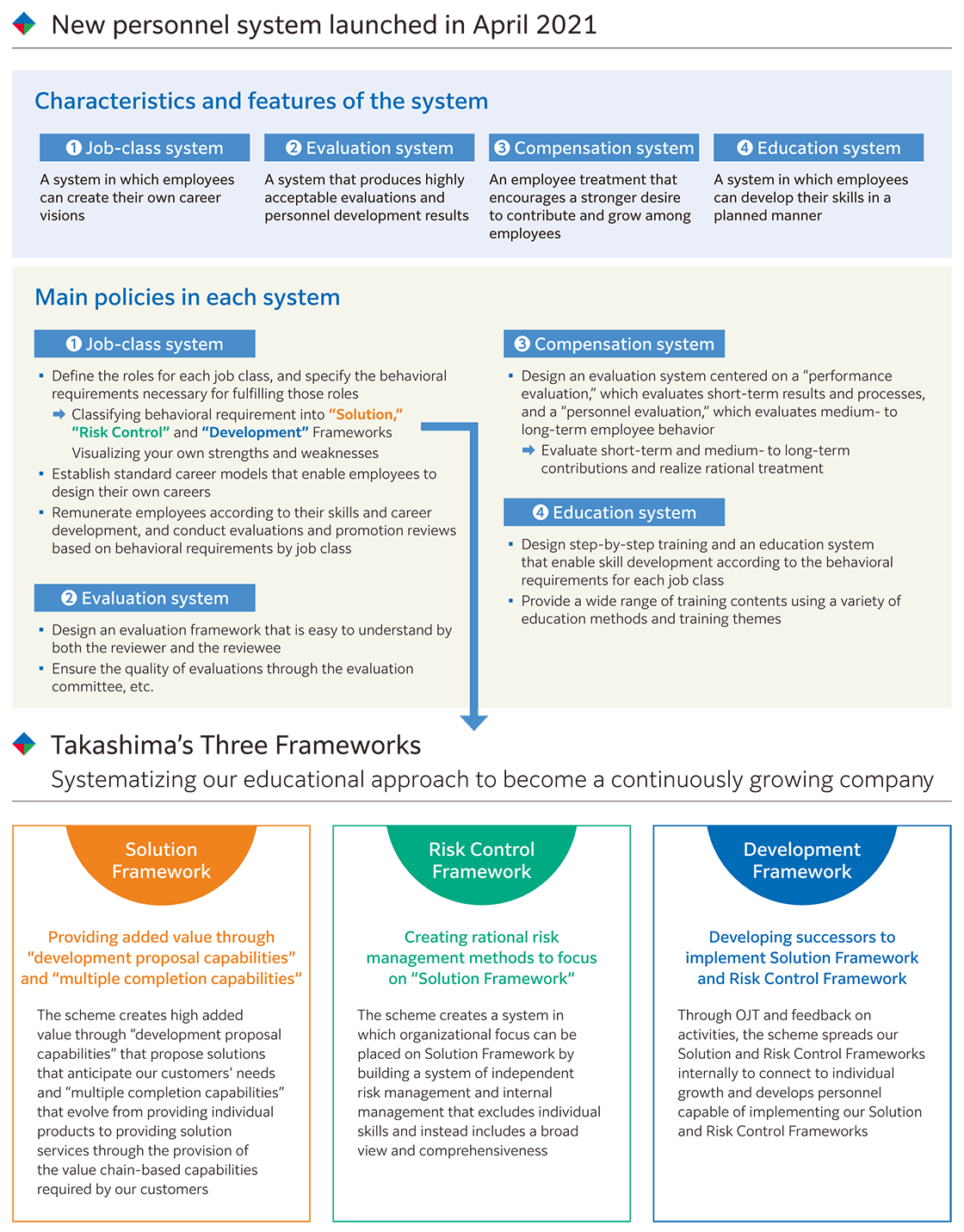Human Assets Strategy
The core of our value creation and our most important capital is “human assets.” The growth of human assets, coupled with the sustainable growth of our business, will lead to the sustainable growth of our enterprise value.
The basic approach to our human assets strategy is to strengthen the recruitment of human assets who support corporate growth and to create an environment in which they can grow autonomously and demonstrate their abilities.

Human Assets That Support Our Business: Career-Type Human Assets
We have uniquely specified “career-type human assets” as the type of human assets we seek, and we share these values with our employees while focusing on their development.
We define “career-type human assets” as employees who are human assets that take ownership of their career by being their own manager, manage their own careers, and continue to provide great value to society, thereby contributing to the enhancement of enterprise value.
Career-type human assets:
❶ take ownership of their own life career;
❷ leverage the Company’s environment to improve
❸ their work-career capabilities (management capabilities and expertise);
❹ achieve integration with their private career (work-life integration);
❺ autonomously build and develop their own work career; and
❻ possess unique traits (that define their individuality).
❶ Ability to assume the role of a manager, seek what is needed, and perform tasks responsibly and with integrity in order to fulfill the necessary requirements
❷ Ability to not only develop one’s own career but also support others in developing their careers
❶ Ability to fulfill the needs of one’s clients through expertise in specific practices by performing tasks responsibly and with integrity while maintaining diverse perspectives
❷ Ability to not only acquire expertise in specific practices but also support others in improving their expertise
In our view, career-type human assets are human assets who take ownership of their own career, i.e., those who see themselves as their own manager. We believe that improving the abilities associated with the following four requirements,
which we have set forth as requirements for managers, will lead to growth as career-type human assets.
❶ Ability to realize the corporate mission (Vision)
- Ability to illuminate the sustainable value of the Takashima’s existence from a medium- to long-term perspective, spearhead innovation on their own, and improve enterprise value on an ongoing basis
❷ Progress × fit (Design)
- Ability to create businesses while constantly learning (design skills), ability to respond to changes in volatile, uncertain, complex, and ambiguous (VUCA) environments, and the ability to build sustainable businesses and organizations and to appoint and develop human assets
❸ Integrity
- Integrity and honesty; trustworthiness and credibility in the eyes of those inside and outside the Company; and the ability to assume top management responsibilities and to make decisions
❹ Ability to align the direction for the whole organization (Communication)
- Ability to listen to and empathize with others with understanding of and respect for individual diversity, logical and analytical skills, deep insight, ability to utilize digital technology, and global responsiveness

We have launched a committee to support employee growth by determining the elements that characterize career-type human assets (human assets and the environment) as our “ideal state.”
In order to support the growth of human assets, our most important capital, into career-type human assets (the type of human resources we seek), we have created a human asset classification map (a scheme that classifies human assets at the Company based on where they fall along the scales of “management capabilities” and “expertise” along the two respective axes) and fostered an environment where employees can proactively develop their own career visions. Employees can formulate a career plan by taking ownership of their own career and seek to achieve their career goals with the support of their superiors.
In order to promote the growth of career-type human assets at the Company, we have determined our “ideal state” from the two perspectives of skills and mindset (human asset elements) and the Company’s systems and culture for supporting growth (environmental elements). We are establishing a growth support system for developing core human assets who will drive the sustainable growth of our business, while working to build a framework for producing next-generation management human assets who will realize the sustainable growth of enterprise value and take on future management roles.
Human asset classification map

[Purpose]
To promote our human assets strategy in the medium-term management plan, we launched the Human Development Committee on April 1, 2025. Human Development Committee aims to systematically support employee growth to improve overall organizational performance and efficiency, as well as to contribute to boosting employee motivation and engagement by establishing mechanisms that contribute to organizational growth and the retention of talent that the Company seeks.
[Composition]
(1) Regular members: Senior Executive Officers from each division and General Managers from the Business Integration Division
(2) Special members: Outside Directors, General Manager of Internal Auditing Department, and other persons deemed necessary by the committee chair to be invited
(3) Committee chair: Selected by a mutual vote taken among the regular members
(4) Committee vice chair: Nominated and appointed by the committee chair from among the regular members
(5) Committee office: Within the Human Resources Department
[Roles]
Human Development Committee ensures and verifies that training and other various measures are implemented in accordance with the human assets strategy and contribute to the development of human assets, and will support the systematic and standardized maintenance of the sustainability of training, etc., and the reproducible development of human assets.


We seek to ensure that our employees are able to perform in alignment with job-class definitions through skill development by job class.
[Generalist-track employment]

[Administrative-track employment]

